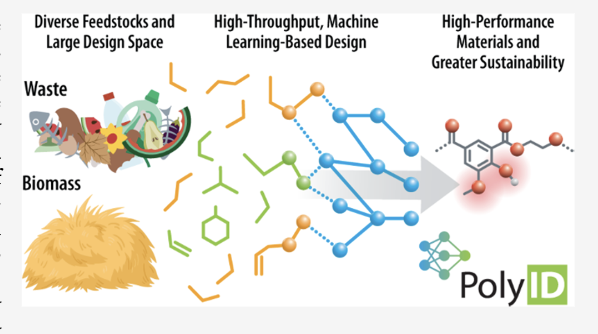This AI Paper Introduces PolyID: Pioneering Machine Learning in the Discovery of High-Performance Biobased Polymers
Artificial intelligence is being used in all aspects of life. AI is used in all directions of life and has become useful in various fields, including chemicals and polymers. In chemistry and polymer science, AI helps scientists discover new materials. It predicts how different chemicals react and suggests the best combinations for creating new and better materials. This makes the process of developing chemicals and polymers faster and more efficient.
However, the challenge confronting material scientists in the 21st century lies in the formulation of more sustainable polymers with better performance standards. This challenge becomes particularly pronounced when the primary available resources are limited to petrochemicals. This task necessitates a balance, requiring both ingenuity and advanced scientific methodologies to develop polymers that meet rigorous performance criteria and adhere to sustainable principles in alignment with contemporary environmental considerations.
According to Brandon Knott, a National Renewable Energy Laboratory (NREL) scientist, petroleum is primarily composed of hydrocarbons, essentially configurations of carbon and hydrogen. These molecular arrangements exhibit beneficial properties, forming the foundation for various advantageous characteristics. Knott’s finding emphasizes that it is important to comprehend the hydrocarbon elements and the molecular makeup of petroleum to harness its extraordinary characteristics for various applications.
Hydrocarbons lack elements like oxygen and nitrogen. But, these elements are essential when manufacturing polymers that require a broader range of functionalities beyond what hydrocarbons alone can offer. Knott suggests a solution involving introducing biomass and waste rich in oxygen and nitrogen into the ingredient list. Materials such as corn stalks, algae, and even garbage possess additional chemical linkages, providing chemists with increased flexibility to achieve specific properties in the polymer manufacturing process. This approach not only broadens the functionality of polymers but also contributes to a more sustainable and resourceful production methodology.
The National Renewable Energy Laboratory (NREL) has employed an advanced machine learning tool, PolyID (Polymer Inverse Design), to facilitate the balance in polymer development. This tool predicts material properties based on molecular structure. With PolyID, researchers can evaluate millions of potential polymer designs and generate a shortlist tailored for specific applications.
PolyID establishes connections between the arrangements of elements such as oxygen, hydrogen, and carbon and material properties, facilitating the prediction of attributes like elasticity, heat tolerance, and sealant performance. NREL scientists effectively utilized PolyID to assess over 15,000 plant-based polymers, seeking biodegradable alternatives for contemporary food packaging films primarily composed of high-density polyethylene, a petroleum-based material. PolyID prioritized essential properties, including high-temperature resistance and robust vapor sealing, while also incorporating environmentally desirable attributes such as biodegradability and a reduced greenhouse gas footprint.
The researchers also did laboratory testing to confirm the accuracy of PolyID’s predictions. The finding was that all seven polymers exhibited resistance to high temperatures and also demonstrated a capacity to lower net greenhouse gas emissions. Additionally, these polymers extended the freshness of packaged food, showcasing the potential of PolyID in efficiently identifying environmentally friendly and high-performance polymer solutions.
PolyID gains the ability to predict the design of new polymers for particular physical properties by building an extensive database that connects the molecular composition of polymers with their known characteristics. According to Nolan Wilson, the study’s principal author, the system can make extremely accurate predictions for novel structures that may not have been experienced or made before.
Check out the Paper and Reference Article. All credit for this research goes to the researchers of this project. Also, don’t forget to join our 32k+ ML SubReddit, 41k+ Facebook Community, Discord Channel, and Email Newsletter, where we share the latest AI research news, cool AI projects, and more.
If you like our work, you will love our newsletter..
We are also on Telegram and WhatsApp.
![]()
Rachit Ranjan is a consulting intern at MarktechPost . He is currently pursuing his B.Tech from Indian Institute of Technology(IIT) Patna . He is actively shaping his career in the field of Artificial Intelligence and Data Science and is passionate and dedicated for exploring these fields.
Credit: Source link


Comments are closed.